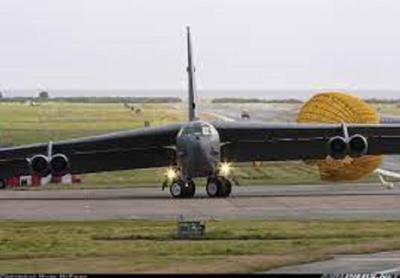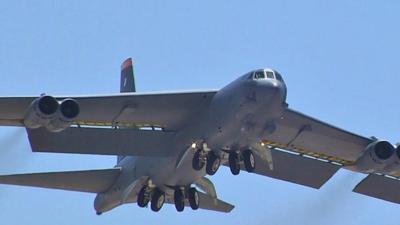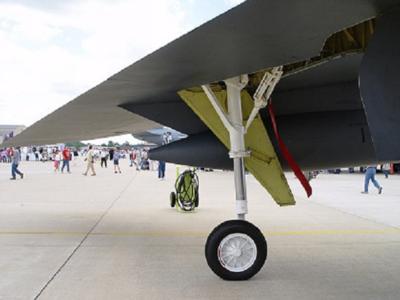USAF Investigates Alleged RIAT Mishap
The U.S. Air Force is investigating an incident in which one of the service’s B-52H Stratofortress allegedly damaged runway lighting while taking part in a 16 July demonstration at 2023’s Royal International Air Tattoo (RIAT) event at RAF Fairford (FFD) in Gloucestershire, United Kingdom.

Held annually, usually at RAF Fairford, in support of The Royal Air Force Charitable Trust, the Royal International Air Tattoo is the world’s largest military air-show. Year upon year, the three-day event draws between 150,000 and 200-000 spectators.
Video footage circulated across numerous social-media platforms appears to show the B-52’s port-side wingtip landing-gear assembly impacting a number of runway lights as it taxied—dramatically crabbed after the fashion peculiar to the storied bomber—at RAF Fairford.
The public affairs office for the 307th Bomb Wing, to which the ostensibly offending B-52 is assigned, declined to comment on the incident, citing an ongoing USAF probe.
A spokesperson for the 307th Bomb Wing stated: “The incident is under investigation at this time. While the investigation is ongoing we can’t speculate as to what happened.”

Social-media commenters unfamiliar with the B-52’s unique undercarriage architecture expressed varying degrees of intrigue, disbelief, and concern vis-à-vis the curious crabbing manner in which the aircraft is capable of taxiing, taking-off, and landing.
In aeronautical parlance, crabbing describes a flight or ground condition in which an aircraft’s longitudinal axis is not aligned with its direction of travel. The B-52’s immense, 185-foot wingspan renders sideslip landings impossible—or at the very least highly-inadvisable. Ergo, Boeing engineers outfitted the bomber with a unique, bicycle undercarriage comprising forward and aft sets of single-axle two-wheel bogies—both of which can be set to angles of as much as twenty-degrees to either side of the aircraft’s longitudinal axis. In crosswind conditions, B-52 pilots may point the aircraft directly into the wind whilst its undercarriage remains aligned with the runway centerline. Only the B-52’s front undercarriage bogies are utilized for steering during taxi-operations.
In addition to a baffling-but-clever undercarriage, the B-52’s vast wingspan—and the wingtip-droop inherent thereto—necessitates wingtip landing-gear assemblies. Subject assemblies are helpful during ground-operations—particularly when a B-52 is laden with a full full-load and its wingtips are drooping to their maximum design-displacement of nearly 12-feet. Regrettably, the B-52’s wing-planform and wingtip landing-gear assemblies are apt to create problems when the aircraft is operated from narrow runways.
Dave Prakash, a retired USAF pilot who flew the B-52 at RIAT in 2009, stated: “Other aircraft, their wings can hang out over the grass no problem, but we have tip gear that need runway to touch down on.”

Mr. Prakash added: “You’re changing the width of the aircraft when you make it tilt to one side and crab to one side. Now you’ve reduced your necessary runway [width] by half, because the one wing is now ten-feet in the air—so it can hang out over the grass.”
The video of the RIAT incident appears to show the wingtip landing-gear assembly of the B-52’s low-wing striking several runway edge lights; “which can happen from time to time,” Prakash noted.
“In the B-52, you can be in such a crab angle that the pilot is looking out one of the side windows, because the side window is what’s lined up with the direction of the runway,” Prakash set forth. “It makes it easier to land because now you don’t have to worry about finessing your rudder or anything like that.”
 NTSB Final Report: Rutan Long-EZ
NTSB Final Report: Rutan Long-EZ ANN FAQ: Turn On Post Notifications
ANN FAQ: Turn On Post Notifications Classic Aero-TV: ICAS Perspectives - Advice for New Air Show Performers
Classic Aero-TV: ICAS Perspectives - Advice for New Air Show Performers ANN's Daily Aero-Linx (06.28.25)
ANN's Daily Aero-Linx (06.28.25) Aero-News: Quote of the Day (06.28.25)
Aero-News: Quote of the Day (06.28.25)





